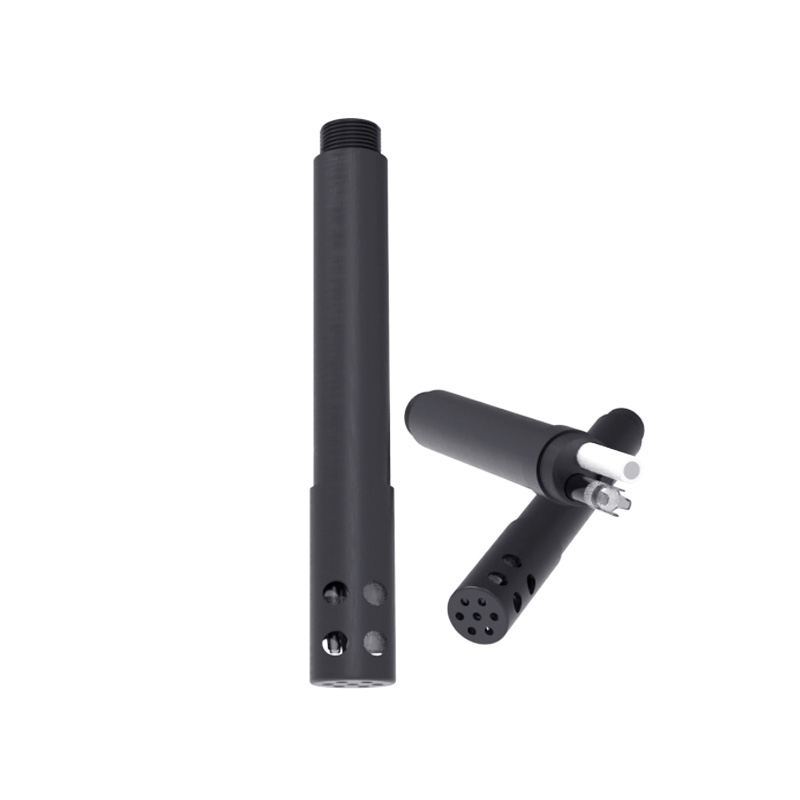Tianyi Sensor IOT Technology Co., Ltd
Sales Manager:Ms. Emily Wang
Cel,Whatsapp,Wechat:+86 15898932201
Email:info@fengtutec.com
Add:No. 155 Optoelectronic Industry Accelerator, Gaoxin District, Weifang, Shandong, China

Sales Manager:Ms. Emily Wang
Cel,Whatsapp,Wechat:+86 15898932201
Email:info@fengtutec.com
Add:No. 155 Optoelectronic Industry Accelerator, Gaoxin District, Weifang, Shandong, China

Model:FT-S14
Brand:tianyi
1.Description of Chloride Ion Sensor application environment
Chloride Ion Sensor is a high precision ion selective electrode designed for accurate chloride ion measurement and is intended to measure the concentration of sodium ions in solution.
The S14 Chloride Ion Sensor uses ion selective electrodes to test free chloride ions in water.It is fast, simple and economical, and can meet the measurement requirements of chloride ions in most industrial environment applications.
Signal output: RS-485 (MODBUS-RTU)
2.Chloride Ion Sensor technical parameters
| Measurement principle | Ion selection method |
| Output method | RS-485 (MODBUS-RTU) |
| Range | 0-3500.0mg/L |
| Resolution | 0.1mg/L |
| Accuracy | ±5%; ±0.3℃ |
| Housing material | ABS |
| Cable length | 5m |
| Power supply voltage | DC12-24V (0.4W@12V) |
| Calibration method | Two-point calibration |
| Measurement environment | 0-50℃ (no freezing) |
| Waterproof grade | IP68 |
| Installation method | Immersive mounting, NPT3/4 thread |
3.Chloride Ion Sensor Maintenance and Maintenance
In order to obtain the most stable results, it is recommended to soak the ion selection electrode in a standard solution (usually 100ppm) for 10-15 minutes before measurement until the reading is stable.
In order to obtain high-precision results, it is recommended to repeat these steps: remove the electrode from the standard solution, clean, suck dry, and then immerse it in the standard solution (soak for at least 2 minutes to obtain a stable reading) to ensure that the electrode is properly wetted and pretreated.
When the electrode is used for the first time or after long-term storage, it is necessary to soak in the standard solution overnight or even 48 hours to obtain a stable reading.After the pretreatment, spray the electrode with deionized water and carefully suck it dry with absorbent paper instead of drying it.
Place the sensor vertically when not in use, and do not place it horizontally for a long time.
The electrodes should be kept dry when the sensor is not in use for a long time.
Soil salinity refers to the total amount of various soluble salts contained in the soil. Imagine that the soil is like a large container filled with a variety of substances, and soil salinity is one of these substances. These salts mainly accumulate gradually during the soil formation process from s...
Although traditional mechanical wind speed and direction meters have, to some extent, met basic requirements, they have limitations in terms of accuracy, response speed, and reliability. With the advancement of technology, the 3D Ultrasonic Anemometer based on the time - difference method has been d...
As a crucial component of the power system, transmission lines undertake the important task of efficiently transmitting the electrical energy generated by power plants to various regions. By constructing a vast transmission network, electrical energy can travel over long distances to meet the electr...
Ultrasonic resonance anemometry is a commonly used meteorological observation technology. Its principle is to utilize the propagation characteristics of ultrasonic waves in the air to measure wind speed and wind direction. When sound waves propagate in the air, their speed will be affected by the wi...